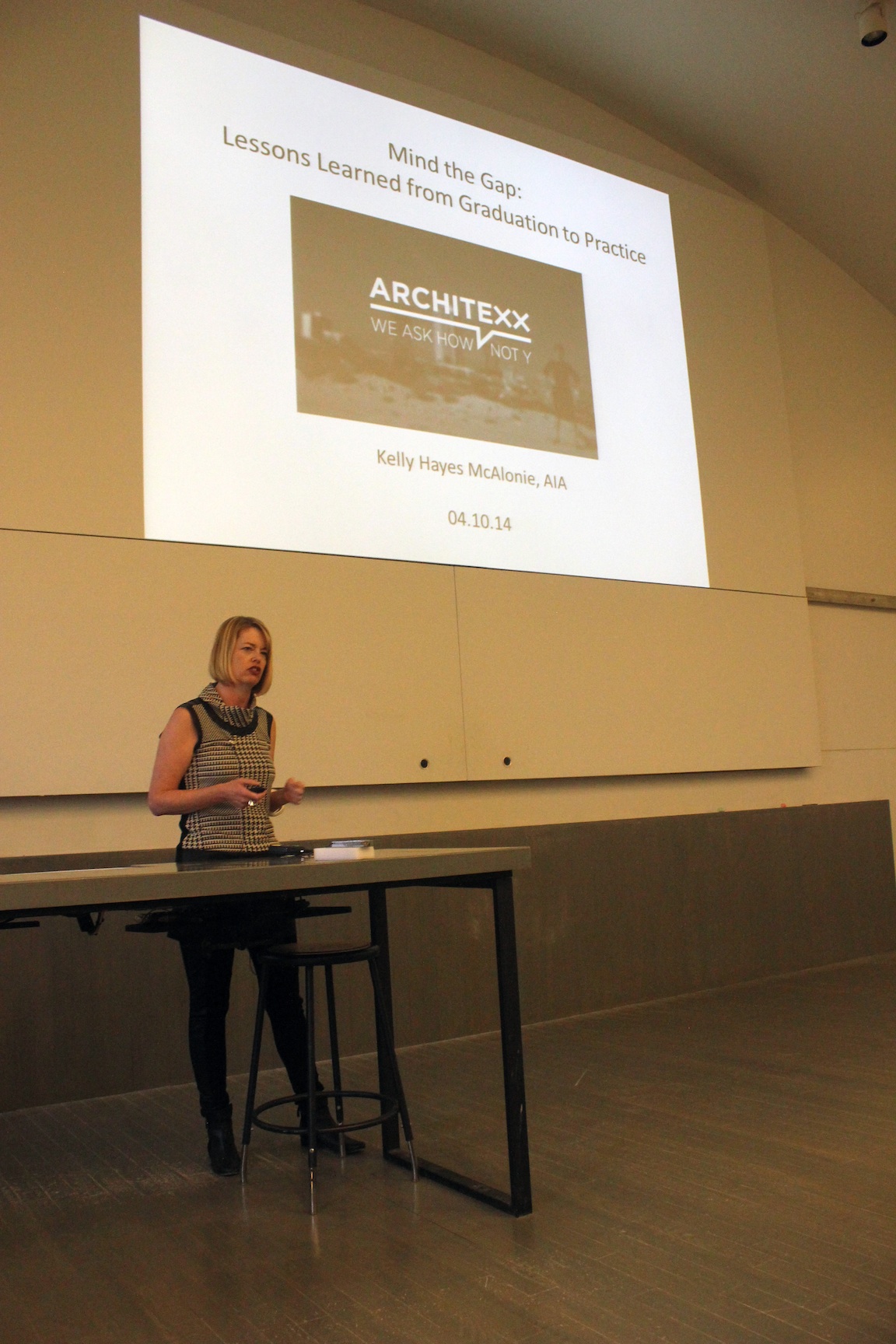Mind the Gap: from School to Office
By Gabrielle Printz For our Brown Bag Lecture at the University at Buffalo School of Architecture and Planning, Mind the Gap, we wanted to recognize the core interest of ArchiteXX in uniting the academy and practice in by directly confronting the perceived chasm between the two. Framed as a guide for current students about the transition from architecture school to the architecture office, our speakers Kelly Hayes McAlonie and Elisabeth Perrault – two mid-career Buffalo architects at large firms – gave insight into their experience, both implicitly and explicitly for them as women.
The title of the lecture “Mind the Gap” refers not only to this gap in time or experience when you leave the studios of Crosby (or Avery or Milstein) and arrive in some future as an Architect, but it also acknowledges The Missing 32%: the drop-off of women in the profession between graduation and licensure acknowledged by a campaign by the AIASF. Despite making up nearly half of students in architecture schools, women only represent 18% of licensed architects. That number is even smaller for women of color and for those that hold leadership positions in firms.
In general, the idea of demystifying the experience of working in an office is a topic that has broad appeal among students and there is implicit value in putting forward examples of women architects who can speak to those issues. It helps to erode the assumption that the architecture office (and architecture at large) is still a de facto male environment. In their individual presentations and in the discussion that followed, McAlonie and Perrault engaged more directly with how exactly women graduates can navigate this landscape.
The conversation proceeded as a balance between two perspectives, with McAlonie opening the talk with a few f-words that codify key lessons for intern architects. McAlonie’s feminism defines her experience as an actor in a “culture of against” (the criticality of an office environment). Choosing to speak loudly on her own behalf and on behalf of other young women designers as a mentor, McAlonie makes explicit her role as advocate.
Perrault’s talk, in contrast, was presented as a self-described “gender neutral case-study.” Walking through her years as an intern and now Vice President at Cannon Design, Perrault acknowledged the need for a tough skin at a competitive, corporate firm, adding that she may have a few notes in her HR file about her so-called “hard edges.” She responds to “sweetheart” with heartlessness, an intensity that is focused singularly on the output of quality work.
In the conversation that followed, attendees prodded at Perrault’s gender-neutral position, and in return, she acknowledged that she doesn’t feel or doesn’t want to feel disadvantaged in her profession, despite her outrage at the miniscule percentage of women principals. In general, though, the tone of the discussion was one of support and not outrage. The event was incredibly productive and energizing for the practitioners, students and faculty in a city and at a university that currently does not have an active network of women design professionals. This talk was definitely the start of a much-needed conversation.
Mind the Gap took place at the University of Buffalo School of Architecture and Planning on April 10, 2014.
[author] [author_info]Gabrielle Printz is an M.Arch Candidate at the University at Buffalo School of Architecture and Planning, where she also teaches a first-year studio. Her thesis, recently presented at the UB Gender Institute's 2014 Gender Across Borders symposium, explores bodily difference and body-specificity in spite of an architectural tradition of the "well-shaped man."[/author_info] [/author]


